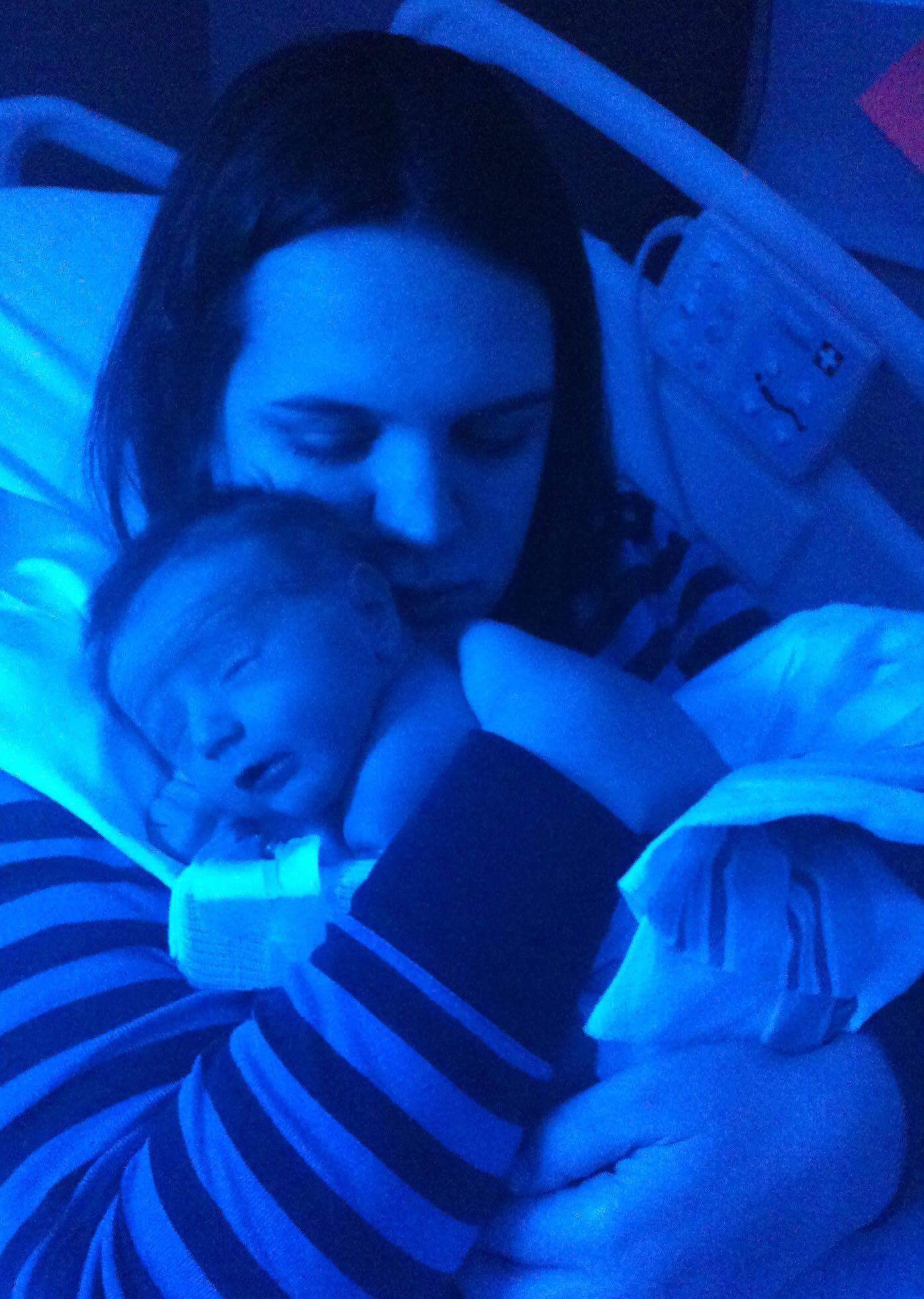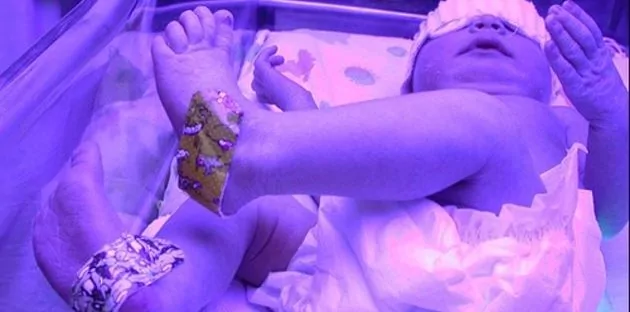by Dr. Christie del Castillo-Hegyi, M.D. ![]()
They found that the babies who had hyperbilirubinemia high enough to require phototherapy (bilirubin levels of 20.58±2.96 mg/dL) had significantly higher levels of S100b than the healthy babies, (S100B levels 87.3± 2.63 pg/mL in healthy babies vs. 124.97 ± 123.05 pg/mL in phototherapy babies; p = 0.032). They also found higher levels of MDA, a marker of oxidative stress from cell death, in the babies requiring phototherapy as well (5.55±0.6 nmol/mL vs. 7.72±0.75 nmol/mL; p<0.001). The levels of S100b was NOT reversed by phototherapy, suggesting that phototherapy neither increased brain cell death nor reversed it. The purpose of phototherapy is to prevent further brain injury caused by hyperbilirubinemia but it does not reverse brain injury.

Owen lost 20% of his birth weight and developed severe jaundice due to starvation from insufficient exclusive breastfeeding. He is 4 years old and has global developmental delay.
As I previously posted, 1 in 10 babies in the Baby-Friendly Hospital System of Kaiser Permanente Northern California were hospitalized for jaundice requiring phototherapy; over 10,000 babies in 3 years alone. This study suggests that by the time a baby requires phototherapy, brain damage has already occurred. Exclusive breastfeeding at discharge is one of the highest risk factors for hospitalization for hyperbilirubinemia requiring phototherapy. It confers an 11-fold risk for being rehospitalized for dehydration or excessive weight loss.
When breastfeeding advocates say that the Baby-Friendly protocol protects babies from these complications by teaching correct latch and providing follow-up appointments, they fail to recognize the most significant cause of hyperbilirubinemia, which is insufficient presence of breast milk before lactogenesis II to prevent hyperbilirubinemia. Insufficient breast milk from delayed lactogenesis II occurs to as many as 22% of exclusively breastfeeding mothers, even with excellent lactation support. No amount of latch education and supervision can overcome the most powerful determinant of bilirubin accumulation in the blood, which is the amount of milk a baby receives. Supplemented and formula-fed babies have been documented in the scientific literature to have lower bilirubin levels because they receive more milk than exclusively breastfed newborns. In addition, the percent weight loss, also determined by the amount of milk a newborn receives, has been shown to predict the development of hyperbilirubinemia. The higher the weight loss, the higher the bilirubin levels in newborns.
These studies combined show that the Baby-Friendly Hospital System fails to protect babies from brain-injuring levels of hyperbilirubinemia at a rate of 1 in 10. The basic science of brain injury tells us that no amount of fluid and formula resuscitation, phototherapy or breast milk can reverse the brain injury already experienced by the newborn.
Newborn brain injury is a mistake that can never be taken back. It happens much sooner than we realize. This is one of the first studies documenting that brain injury is already present in jaundiced newborns requiring phototherapy. Fed is Best.
https://drive.google.com/open?id=0B0_MbXCqYazzNGlPdVZFamVkbEU
